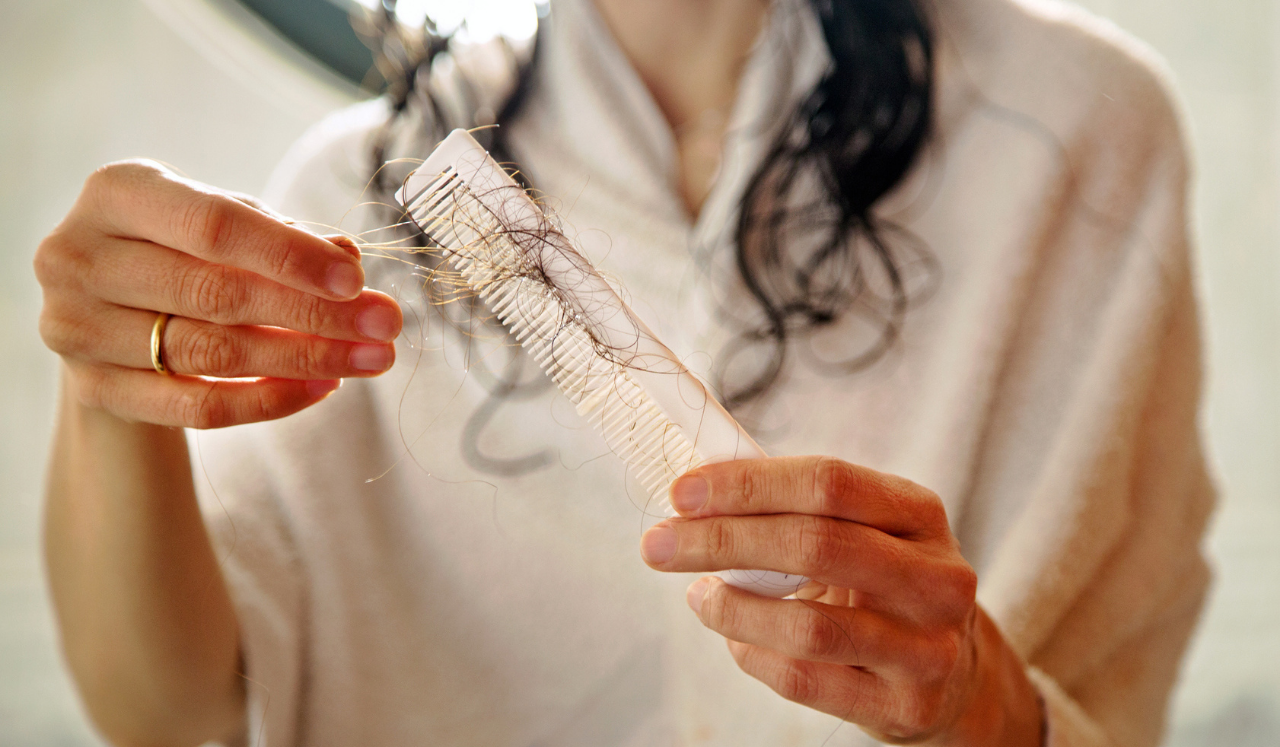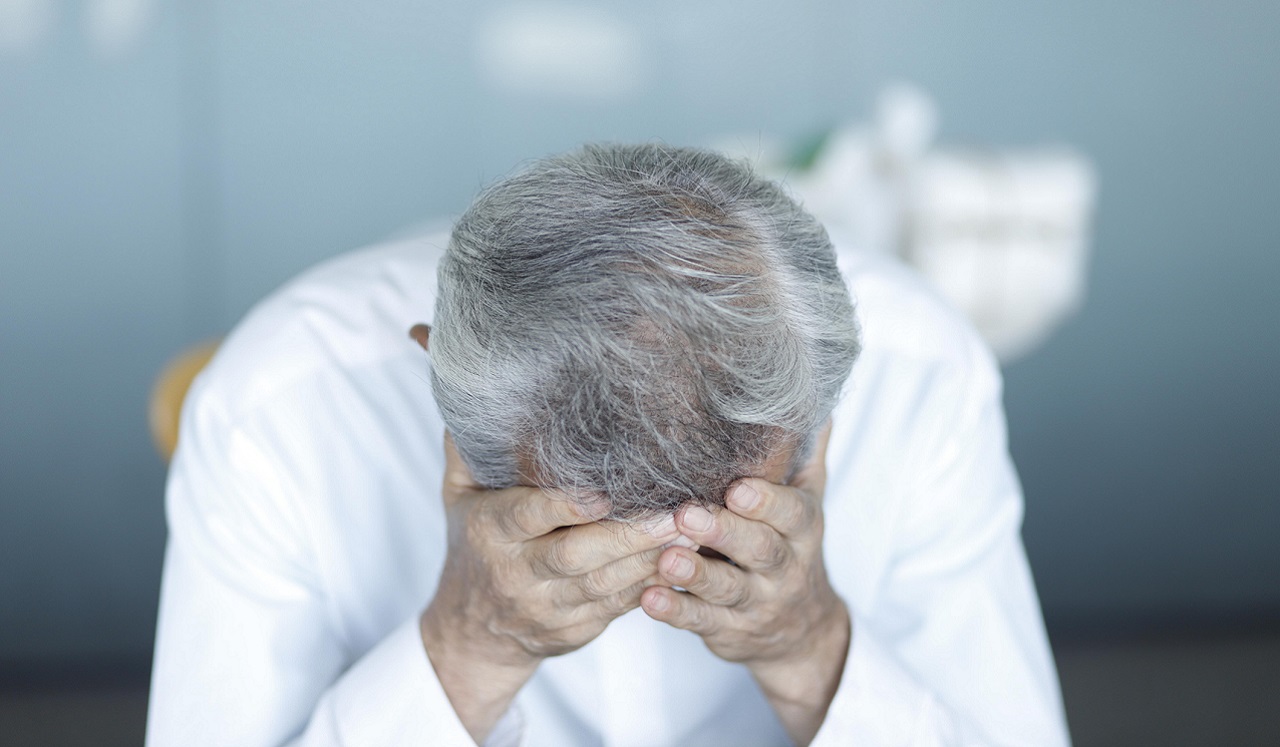It’s easy to get stressed out when hair strands clog your shower drain or cover your brush.
“Hair is a very important part of our identity,” says Christopher Levert, MD, an internist with Memorial Hermann Medical Group (MHMG) Katy Primary Care.
Some hair loss is normal. Both sexes shed 50 to 100 hairs daily–out of 100,000 hairs on our scalps. “Hair is in a constant recycling, with growth, resting and shedding,” Dr. Levert says.
But if you’re concerned or experiencing heavier hair loss, see your dermatologist or primary care physician sooner rather than later. Doctors can assess damage, determine the cause and offer solutions.
“We have many treatments to help with hair loss. The sooner they are used, the more successful they’ll generally be,” says Dr. Levert.
When you’re losing your locks, the root of the problem is likely one of these nine culprits:
ONE: Your famly genes can spur hair loss.
Male- or female-pattern hair loss is inherited from either parent.
A receding hairline and a thinning crown of your head are most likely due to male-pattern baldness, which usually starts after 30 and affects half of men by age 50. It also can affect women, to a far lesser extent.
Overall thinning and sometimes a widening part are due to female-pattern hair loss, beginning around age 50 due to falling estrogen levels. Follicles shrink in 40% of women under age 70.
RX: Head to your dermatologist or internal medicine doctor, who can halt hair loss with prescription drugs, such as Rogaine® or Propecia®. Microneedling and low dose laser therapy can boost blood flow, which can speed hair growth. Hair grafts also can fill in bald areas.
TIMELINE: Treatments take 4 to 9 months to pump up the volume, Dr. Levert says.
TWO: You smoke.
Estrogen and testosterone levels drop, causing male- and female-pattern hair loss to start early. Cigarettes also spawn free radicals, which destroy hair follicles. This thins hair and precipitates graying.
RX: “One of the best things you can do for your hair (and overall health) is to stop smoking,” says Dr. Levert.
TIMELINE: New hairs start to grow as soon as you stop smoking.
THREE: You handle your hair harshly.
Your tresses don’t put up with roughness. Vigorous towel drying, excessive brushing or combing and too much heat from blow dryers, curling irons and flattening irons can speed shedding or breakage. Extensions or tight ponytails and buns also lead to lock loss.
And, ironically, hairpieces can backfire: “If you use glue to hold a wig or toupee in place, you may pull out hairs,” Dr. Levert says.
Surprise: Dry shampoos cause small breaks in hair ends, which can slow growing.
RX: Be gentle to put the brakes on breakage. Wrap your head with a towel turban or let hair dry naturally. Also lower the heat or shorten the duration of hair appliances and rely on a salon for extensions. And, you may wash your hair too often. “Dry, thick or curly hair should be washed as little as once or twice a week, though it may benefit from conditioner more frequently. Hair washing should depend on how thick or oily it is,” he says. “Oily hair should be washed daily or every other day.” Use a mild shampoo.
How you wear your hair matters, too. “The looser you wear your hair the better,” Dr. Levert says. “If you choose to wear extensions, seek salons that specialize in them.”
TIMELINE: Alas, damaged locks often have to regrow, so you’ll have to wait weeks or even a few months before you see fuller, healthier hair.
FOUR: You’re a color chameleon.
Constantly changing your hair’s hue tends to lead to breakage, as does the use of home coloring and perm kits. According to Dr. Levert, home kits tend to have harsher chemicals than those used by professional colorists.
RX: Slow the frequency of bleaching, coloring or perms to every six weeks or longer, and rely on salon pros to do it. Also give plucking grays a rest. “They’ll just grow back in,” he says.
TIMELINE: Be patient: Distressed tresses must grow out, taking a month or longer—per inch.
FIVE: Your diet is out of whack.
Too rapid weight loss or insufficient protein, iron or vitamins may distress tresses. Antibiotics, diabetes drugs, birth control pills and blood thinners are among drugs that can lead to hair loss.
RX: Keep locks loaded, but not excessively, with a diet rich in fruit and veggies. You’ll get more than enough vitamin B-12 and vitamin A from a balanced diet. And a multivitamin is more than enough backup. Skip other supplements, including those promising hair growths. “There’s no good quality evidence they work,” says Dr. Levert.
Always review your prescriptions with your doctor.
TIMELINE: Hair growth is slow, so you’ll need to wait up to 4 months for it to look healthier.
SIX: Your hormones may be off-kilter.
“Estrogen is an important hormone for hair health,” Dr. Levert says.
Estrogen levels start to drop during perimenopause, around ages 45 to 55. But they’re not the sole hormones that can affect your mane.
So can the male hormone androgen via polycystic ovary syndrome (PCOS), a hormonal disorder in women during the child-bearing years which leads to an excess of it. A sluggish thyroid (a gland in your neck), known as hypothyroidism, also may slow hair growth starting after age 25.
RX: Blood tests can reveal hormone changes. Weight loss alone may be enough to rebalance PCOS-altered hormones. Thyroid replacement drugs can reset the small gland found in your neck. You and your doctor can discuss estrogen replacement therapy after menopause.
TIMELINE: Your hair may not improve for 4 months.
SEVEN: You’ve had a baby or recent surgery.
Trauma triggers hair loss. That includes surgery and childbirth.
RX: Be patient. Loss may continue for up to 6 months. Since post-pregnancy hair loss is hormonal, breastfeeding won’t make a difference in restoring fullness.
TIMELINE: Your hair should return to normal volume in a year.
EIGHT. You are undergoing chemotherapy.
Chemotherapy kills cancer cells, but also healthy ones. Thus, hair tends to fall out in clumps, generally after 2 or 3 weeks of chemo. You also may lose your eyelashes and eyebrows.
RX: Talk to your oncologist. Saving your life is most important, but you may have the option of choosing a chemo agent that is less likely to cause your hair to fall out. Also, cooling caps can cut the likelihood or severity of hair loss by constricting blood flow—and thus chemo drugs—to hair follicles.
TIMELINE: Hair may start to regrow within a month post-chemo, but it may take a few years to reach its previous length. Since chemo affects follicles, your hair may grow back in a different texture or color. Your oncologist can tell you what to expect.
NINE: You’re seriously sick.
Lost locks accompanied by fever, itching, redness, joint pain or scaliness of scalp or skin could signal systemic diseases, such as lupus, psoriasis and other autoimmune diseases. Ringworm, fungal infections and syphilis are possibilities. And a hyper- immune system itself can attack hair follicles, leading to baldness, known as alopecia areata.
RX: See your primary care physician, who can run tests to diagnose your ailment and help you heal.
TIMELINE: Your experience may vary, but give your mane some credit.
“Your hair can be a great alert to overall health problems,” Dr. Levert says.


